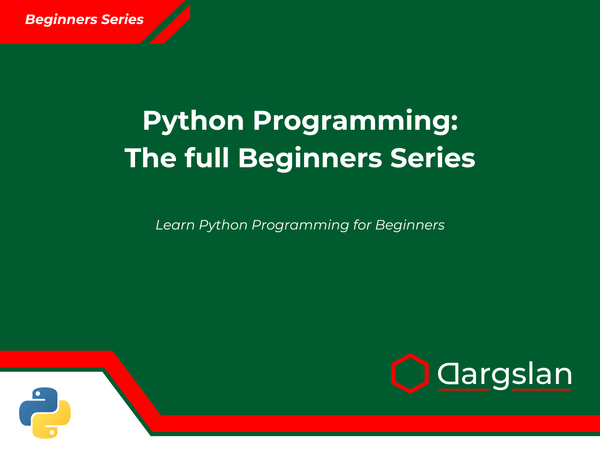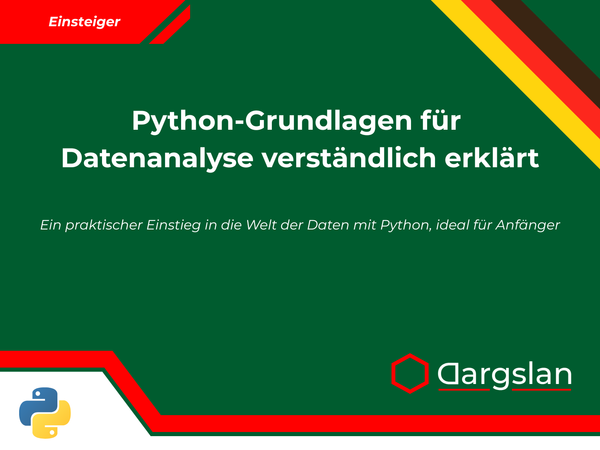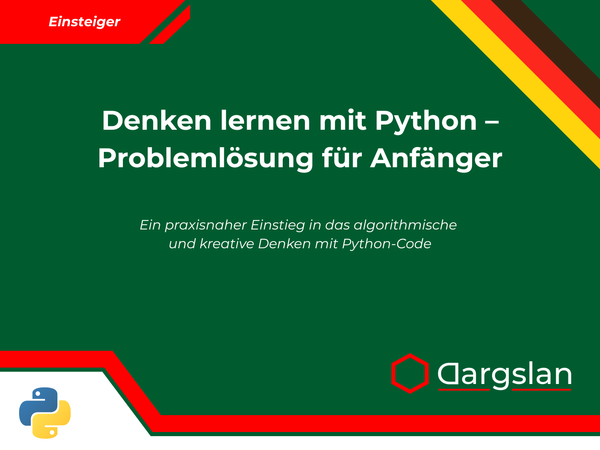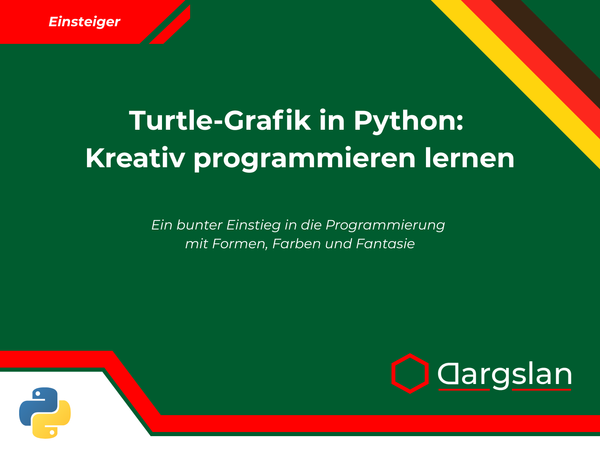Book Review: Building GUIs with Tkinter in Python
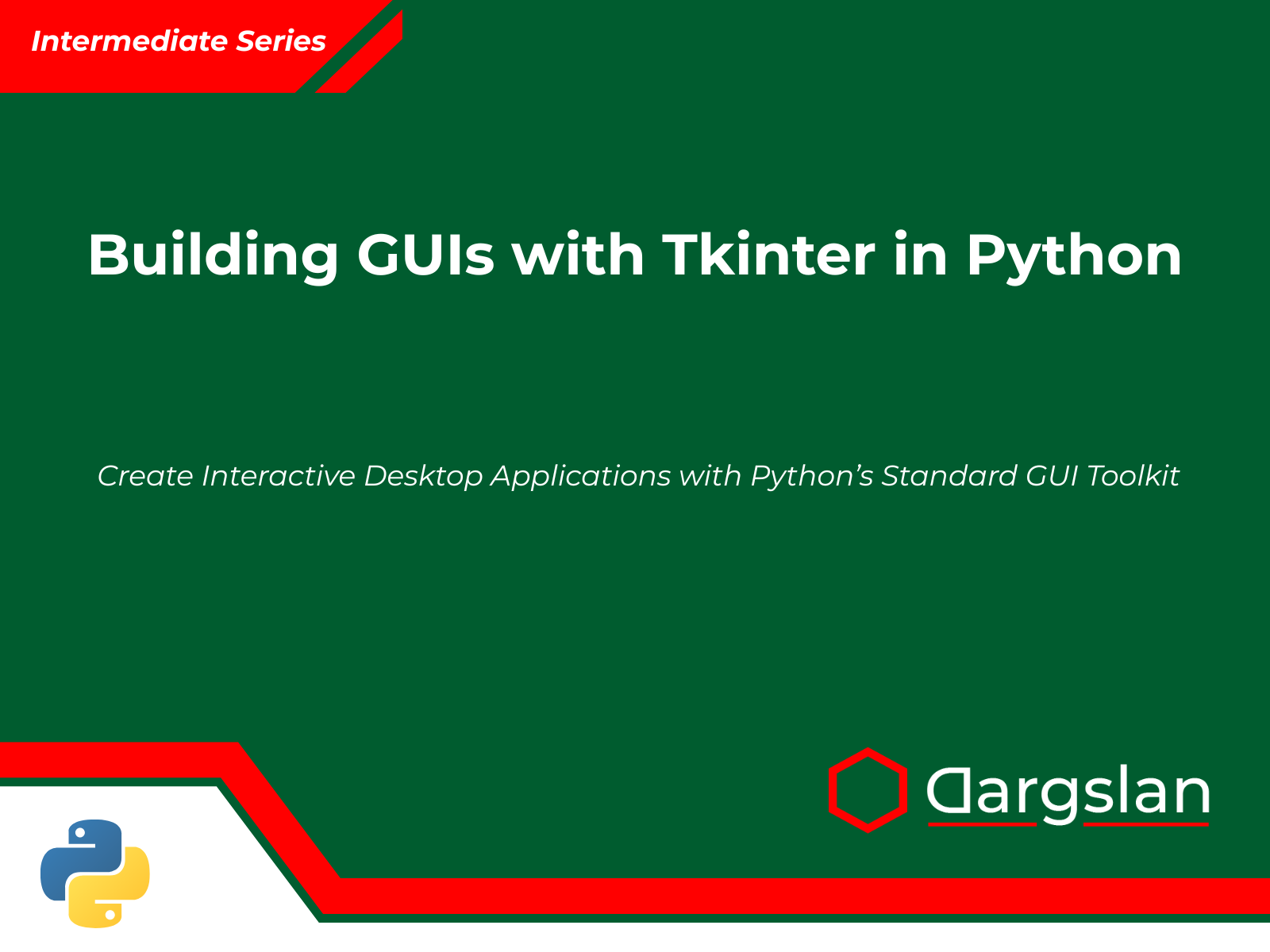
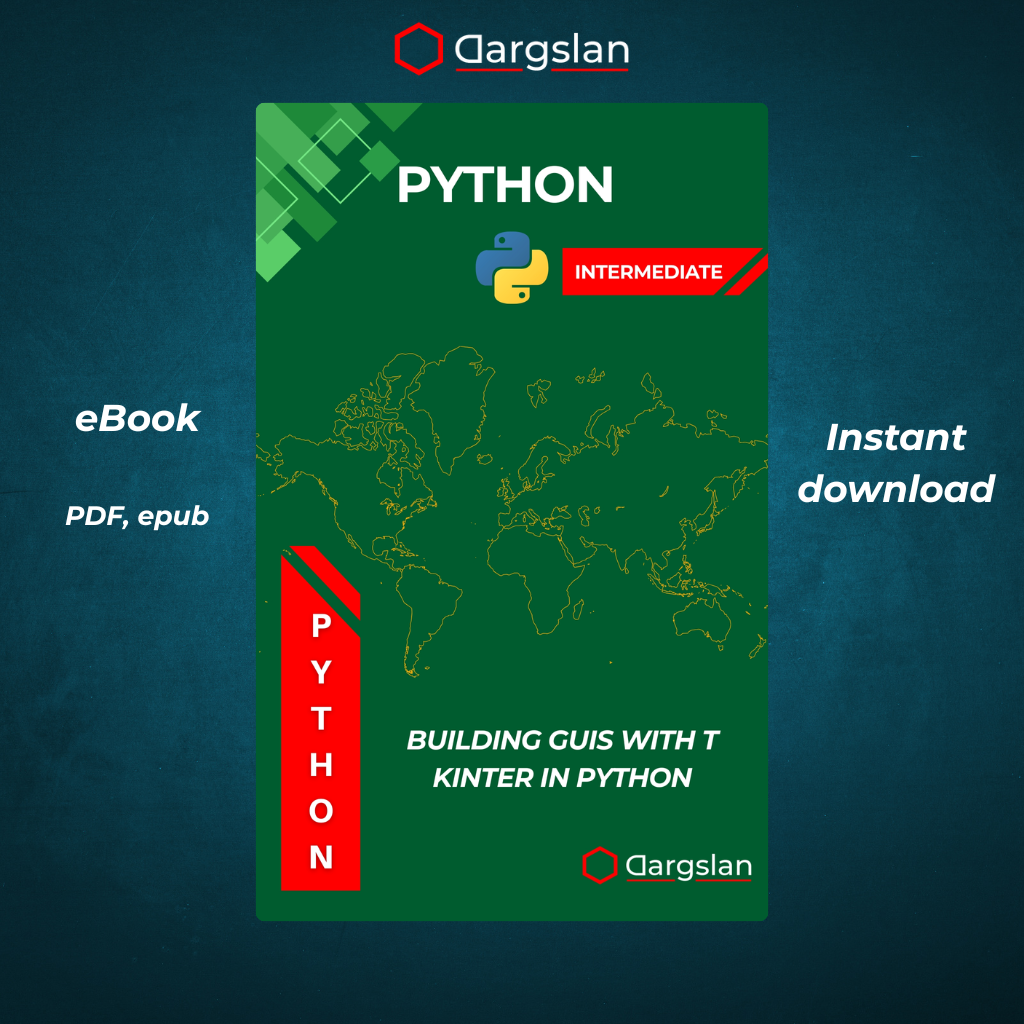
Building GUIs with Tkinter in Python
Create Interactive Desktop Applications with Python’s Standard GUI Toolkit
Comprehensive Review: Building GUIs with Tkinter in Python
A Detailed Analysis of the Ultimate Python Tkinter Resource
In today's digital landscape, creating intuitive graphical user interfaces (GUIs) remains an essential skill for developers looking to make their applications accessible to a broader audience. Building GUIs with Tkinter in Python emerges as a definitive guide that bridges the gap between Python's simplicity and the complexities of desktop application development. This comprehensive review explores how this resource transforms readers from Python script writers to full-fledged GUI application developers.
Book Overview: Mastering Python's Standard GUI Library
Building GUIs with Tkinter in Python offers a structured approach to learning Python's built-in GUI toolkit. Written by Dargslan, this book stands out for its practical, hands-on methodology that guides readers through the complete journey of desktop application development with Python's standard library.
The book spans 10 chapters and several appendices, methodically building the reader's knowledge from basic concepts to advanced implementation techniques. What distinguishes this resource is its dual focus on both technical implementation and design principles—ensuring that readers create not just functional applications, but polished, user-friendly interfaces that follow modern design standards.
Key Features That Set This Book Apart
- Progressive Learning Path: Carefully structured chapters that build upon previous knowledge
- Practical Examples: Real-world code snippets and complete project implementations
- Design Principles: Focus on both functionality and aesthetics in GUI development
- Troubleshooting Guidance: Common pitfalls and debugging strategies specific to Tkinter
- Distribution Knowledge: Complete pipeline from development to packaging and deployment
Chapter-by-Chapter Analysis
Chapter 1: Introduction to Tkinter and GUI Programming
The book opens with a solid foundation in GUI programming concepts, positioning Tkinter within the broader ecosystem of Python GUI libraries. This chapter effectively addresses the fundamental question many developers have: "Why choose Tkinter?"
The author skillfully establishes the value proposition of Tkinter—highlighting its status as Python's standard GUI toolkit, cross-platform compatibility, and minimal external dependencies. This section particularly benefits beginners who might be overwhelmed by the various GUI options available in the Python ecosystem.
Key topics covered include:
- The evolution of GUI programming and Tkinter's place in Python history
- Comparing Tkinter with alternatives like PyQt, wxPython, and Kivy
- Basic Tkinter architecture and the event-driven programming paradigm
- Setting up the development environment across different operating systems
- Creating your first "Hello, World" application with Tkinter
The introductory chapter strikes an excellent balance between theoretical background and practical implementation, setting the stage for deeper exploration in subsequent sections.
Chapter 2: Tkinter Window Structure and Widgets
Chapter 2 delves into the building blocks of any Tkinter application: windows and widgets. This section thoroughly explores the fundamental components that form the visual interface of Python applications.
The strength of this chapter lies in its methodical examination of Tkinter's core widgets, with each component presented alongside practical implementation examples. Rather than simply listing widgets, the author takes care to explain the appropriate use cases for each element, helping readers make informed design decisions.
The coverage includes:
- Creating, configuring, and managing top-level windows
- Understanding the Tk and Toplevel window classes
- Essential widgets including Labels, Buttons, Entries, and Text fields
- Widget configuration options and customization possibilities
- Working with images and icons within Tkinter applications
- Widget states and interaction management
Particularly valuable is the attention given to proper window configuration, including geometry management and window behavior settings that create a professional look and feel.
Chapter 3: Event Handling and Command Binding
The third chapter tackles one of the most crucial aspects of GUI development: creating interactive applications through event handling and command binding. This section transforms static interfaces into responsive applications that can react to user input.
The author excels in breaking down the sometimes confusing event system in Tkinter, making it accessible even to those new to event-driven programming. The explanation of binding functions to widgets is particularly clear, with examples demonstrating both simple and complex event handling scenarios.
Key concepts covered include:
- The Tkinter event loop and how it manages application flow
- Different methods for binding commands to widgets
- Handling mouse events, keyboard events, and window events
- Creating custom events and event propagation
- Practical examples of common event patterns
- Debugging event-related issues in Tkinter applications
This chapter effectively bridges basic widget knowledge with the interactive aspects of GUI development, preparing readers for building truly responsive applications.
Chapter 4: User Input and Forms
Chapter 4 focuses on collecting and validating user input—an essential aspect of most real-world applications. The depth of coverage on form creation and validation sets this book apart from many other Tkinter resources.
This section shines in its treatment of validation techniques, offering both basic and advanced methods to ensure data integrity. The author provides thoughtful examples of different form patterns, demonstrating how to structure input fields for optimal user experience.
Topics explored include:
- Working with various input widgets (Entry, Text, Spinbox, etc.)
- Input validation techniques and error handling
- Creating cohesive forms with logical tab order
- Building responsive forms that adapt to window resizing
- Managing focus and selection in form fields
- Saving and loading form data
The practical examples showcase common patterns like login forms, registration interfaces, and data entry screens, giving readers templates they can adapt to their own projects.
Chapter 5: Layout Design and Frames
The fifth chapter addresses one of Tkinter's most challenging aspects: managing layout and creating responsive designs. This section provides a comprehensive examination of Tkinter's three geometry managers: pack, grid, and place.
What makes this chapter particularly valuable is its comparative approach, demonstrating when each manager is most appropriate and how they can be combined effectively. The author doesn't just explain how to use these managers but provides design principles that lead to professional-looking interfaces.
Key areas covered include:
- Mastering the pack geometry manager for simple layouts
- Using the grid system for complex form-based interfaces
- Precise positioning with the place geometry manager
- Nesting frames to create complex layouts
- Techniques for responsive design that adapts to window resizing
- Common layout patterns for different application types
The inclusion of concrete design patterns and anti-patterns helps readers avoid common pitfalls that lead to awkward or unprofessional interfaces.
Chapter 6: File Dialogs and Menus
Chapter 6 elevates applications from basic interfaces to complete desktop programs by introducing file dialogs and menu systems. This section covers essential components that users expect in professional applications.
The author provides thorough coverage of Tkinter's dialog capabilities, going beyond basic file selection to include custom dialogs and message boxes. The treatment of menu design is particularly strong, covering not just implementation but best practices for menu organization.
Topics explored include:
- Creating and customizing file open/save dialogs
- Implementing various message boxes and alerts
- Building comprehensive menu systems with cascading menus
- Creating context (right-click) menus
- Adding keyboard shortcuts and accelerators
- Implementing status bars and toolbars
This chapter effectively demonstrates how to add professional touches that transform simple interfaces into complete desktop applications that meet user expectations.
Chapter 7: Styling and Theming Your GUI
The seventh chapter addresses an often-overlooked aspect of Tkinter development: visual styling and theming. This section tackles Tkinter's reputation for dated-looking interfaces by exploring various approaches to modernization.
The author provides valuable insights into both built-in styling options and integration with third-party themes, offering solutions for developers who want their applications to have a contemporary appearance. The balanced treatment of both Tkinter's native capabilities and external theming options gives readers flexibility in their approach.
Key areas covered include:
- Working with colors, fonts, and borders in Tkinter
- Using the ttk themed widget set for modern appearances
- Creating custom styles and themes
- Implementing light and dark mode capabilities
- Maintaining visual consistency across an application
- Platform-specific styling considerations
The practical examples demonstrate before-and-after styling transformations, helping readers understand the impact of good visual design on user perception.
Chapter 8: Advanced Widgets and Customization
Chapter 8 ventures into more sophisticated territory, exploring advanced widgets and customization techniques that add polish and enhanced functionality to Tkinter applications. This section helps developers move beyond basic interfaces to create feature-rich applications.
The strength of this chapter lies in its comprehensive coverage of Tkinter's more complex widgets and its guidance on extending and customizing them. The author balances explanation with practical examples, showing how these advanced components solve real-world problems.
Topics examined include:
- Working with Treeview for displaying tabular data
- Implementing progress indicators and status displays
- Creating canvas-based graphics and custom visualizations
- Building custom widgets by combining existing components
- Extending Tkinter through integration with other libraries
- Animation and dynamic elements in Tkinter interfaces
The chapter particularly excels in demonstrating how to overcome Tkinter's limitations through creative solutions and integrations with other Python libraries.
Chapter 9: Building Real-World Mini Projects
The ninth chapter puts theory into practice through complete mini-projects that integrate concepts from previous chapters. This section bridges the gap between understanding individual components and creating cohesive applications.
What makes this chapter valuable is the realistic nature of the projects, which represent common applications developers might want to build. The author walks through the complete development process, from requirements gathering to final implementation, providing insights into the decision-making process along the way.
Projects covered include:
- A feature-rich text editor with syntax highlighting
- A personal finance tracker with data visualization
- An image browser and basic editor
- A task management application with data persistence
- A simple database front-end for data entry and retrieval
Each project builds upon concepts from previous chapters while introducing new techniques specific to particular application types. The code is well-commented and modular, serving as an excellent reference for readers' own projects.
Chapter 10: Packaging and Distributing Your GUI App
The final chapter addresses a critical but often overlooked aspect of application development: packaging and distribution. This section completes the development journey by showing how to share applications with end users.
The author provides a thorough examination of various distribution methods, with practical guidance on choosing the right approach for different scenarios. The coverage of platform-specific considerations is particularly valuable for developers targeting multiple operating systems.
Key topics covered include:
- Using PyInstaller to create standalone executables
- Creating installers for Windows, macOS, and Linux
- Managing dependencies in distributed applications
- Implementing auto-update mechanisms
- Code signing and security considerations
- Distribution through app stores and repositories
This chapter fills an important gap in many Tkinter resources, which often focus on development while neglecting the crucial final step of getting applications into users' hands.
Appendices: Invaluable Reference Materials
The book's appendices serve as practical reference guides that complement the main content. These resources transform the book from a learning tool into an ongoing reference for Tkinter development.
Tkinter Widget Reference Guide
This appendix provides a comprehensive catalog of Tkinter widgets with syntax, properties, and usage examples. The alphabetical organization and consistent format make it easy to quickly find information on specific widgets during development.
Event Binding Cheat Sheet
A concise yet complete reference for Tkinter's event binding system, this appendix includes a table of event types, binding patterns, and examples. This proves invaluable when implementing interactive elements in applications.
Example GUI Templates
The templates appendix offers ready-to-use code for common application layouts and patterns. These templates serve as solid starting points for new projects, saving development time and promoting consistent design.
Common Errors and Debugging Tips
This troubleshooting-focused appendix addresses typical Tkinter errors and their solutions. The organized approach to debugging guidance helps readers quickly overcome obstacles during development.
Target Audience Analysis
Building GUIs with Tkinter in Python effectively serves multiple audiences:
For Python Beginners
The book assumes Python fundamentals but provides sufficient scaffolding for those relatively new to the language. The clear explanations and progressive nature of the content make it accessible to those who have completed a basic Python course and are looking to advance their skills.
For Intermediate Python Developers
Programmers familiar with Python but new to GUI development will find the methodical approach particularly valuable. The book bridges their existing Python knowledge with new GUI concepts without unnecessary repetition of basic programming principles.
For GUI Development Newcomers
Those with experience in command-line or web applications will appreciate the focus on GUI-specific patterns and practices. The author takes care to explain concepts unique to desktop application development.
For Experienced Developers New to Tkinter
Developers with experience in other GUI frameworks will benefit from the comparative notes and Tkinter-specific implementation details, allowing them to transfer their existing knowledge to this new context.
Technical Accuracy and Code Quality
A standout feature of this book is its technical precision and high-quality code examples. The author demonstrates best practices throughout, including:
- Proper error handling and input validation
- Resource management and memory considerations
- Separation of concerns in application architecture
- Consistent naming conventions and code styling
- Comprehensive comments explaining non-obvious code
- Performance considerations for responsive interfaces
The code examples strike an excellent balance between brevity for clarity and completeness for functionality. Even complex concepts are illustrated with readable, well-structured code that serves as a model for readers' own development practices.
Visual Learning Support
The book effectively integrates visual elements to support learning:
- Screenshots demonstrate the appearance and behavior of widgets and complete interfaces
- Diagrams clarify complex concepts like event flow and widget hierarchies
- Code-to-UI comparisons show the relationship between Tkinter code and resulting interfaces
- Before-and-after examples illustrate the impact of styling and layout techniques
These visual elements help readers connect abstract concepts with concrete implementations, accelerating the learning process and improving retention.
Comparative Analysis with Other Tkinter Resources
When positioned against other Tkinter learning resources, this book distinguishes itself in several key areas:
-
Comprehensive Scope: Unlike many resources that focus only on widgets and basic interactions, this book covers the complete development lifecycle from concept to distribution.
-
Modern Approach: The book addresses Tkinter's dated reputation head-on, providing techniques for creating contemporary interfaces that meet modern user expectations.
-
Design Focus: Where many technical resources neglect aesthetic considerations, this book balances technical implementation with design principles.
-
Practical Application: The real-world projects and templates provide immediate practical value beyond theoretical understanding.
-
Troubleshooting Guidance: The dedicated debugging section addresses the reality that much development time is spent solving problems rather than writing new code.
These distinguishing features make the book particularly valuable in a landscape where many Tkinter resources fail to address the full spectrum of development needs.
Strengths and Limitations
Key Strengths
-
Progressive Structure: The logical flow from basic concepts to advanced techniques builds confidence systematically.
-
Dual Focus on Implementation and Design: The balanced attention to both coding techniques and design principles results in more professional applications.
-
Practical Problem-Solving: The book anticipates common challenges and provides strategies to overcome them.
-
Complete Development Pipeline: Coverage extends beyond coding to include distribution, a crucial yet often neglected aspect.
-
Reusable Resources: The templates and reference materials provide ongoing value beyond the initial reading.
Potential Limitations
-
Python Prerequisites: While accessible to relative beginners, the book does assume basic Python knowledge, which may challenge complete newcomers.
-
Platform-Specific Nuances: While Tkinter is cross-platform, some platform-specific behaviors might require additional research beyond the book's coverage.
-
Rapid Evolution: As with any technology resource, evolving tools and libraries may eventually date some specific recommendations.
These limitations are largely unavoidable given the book's scope and target audience, and they do not significantly detract from its overall value.
Impact on Python GUI Development Skills
Readers who work through this book can expect significant growth in several key competency areas:
Technical Skills Development
- Comprehensive understanding of Tkinter's widget set and capabilities
- Ability to create responsive, well-structured GUI layouts
- Proficiency in event-driven programming paradigms
- Skills in extending Tkinter through integration with other libraries
Design Competency Growth
- Improved intuition for user interface organization and flow
- Better visual design sensibilities for creating polished interfaces
- Understanding of accessibility considerations in desktop applications
- Ability to create consistent visual experiences across an application
Software Engineering Advancement
- Enhanced application architecture planning for GUI programs
- Better practices for managing application state
- Improved error handling and user feedback mechanisms
- Knowledge of packaging and distribution workflows
Career Impact
- Addition of desktop application development to professional skill set
- Ability to create internal tools and utilities with professional interfaces
- Portfolio-worthy projects demonstrating full-stack development capabilities
- Transferable knowledge applicable to other GUI frameworks
Use Cases and Applications
The knowledge gained from this book enables developers to create a wide range of applications:
Business and Productivity Tools
- Data entry forms and database frontends
- Report generators and business analytics dashboards
- Workflow automation tools with visual interfaces
- Document processing and management systems
Educational Software
- Interactive learning environments
- Visualization tools for complex concepts
- Quiz and assessment applications
- Educational game interfaces
Creative Applications
- Media organizers and simple editors
- Graphic design and drawing tools
- Music and audio production utilities
- Creative writing and note-taking applications
Scientific and Technical Tools
- Data visualization and analysis interfaces
- Instrument control and monitoring systems
- Simulation environments with visual feedback
- Research data collection and management tools
The versatility of Tkinter, as presented in the book, makes it suitable for nearly any desktop application where cross-platform compatibility and minimal dependencies are priorities.
SEO-Relevant Keywords Naturally Integrated
Throughout this review, you'll notice the natural integration of key terms relevant to Python GUI development:
- Python GUI development
- Tkinter tutorial
- Desktop application development with Python
- Python Tkinter examples
- Creating user interfaces in Python
- Python Tkinter widgets
- Event handling in Tkinter
- Python GUI frameworks
- Cross-platform Python applications
- Tkinter vs PyQt
- Modern Tkinter interfaces
- Python GUI design patterns
- Packaging Python applications
- Tkinter layout management
- Python application distribution
These terms reflect the actual content of the book while also aligning with common search queries from developers looking to enhance their GUI development skills.
Final Assessment and Recommendation
Building GUIs with Tkinter in Python stands as an exceptional resource that fills a significant gap in the Python development literature. By addressing both technical implementation and design considerations, the book enables readers to create professional-quality applications rather than merely functional ones.
The methodical progression from fundamentals to advanced topics, combined with practical projects and reusable templates, creates a learning experience that transforms theoretical knowledge into applicable skills. The inclusion of distribution and packaging information completes the development journey in a way many resources neglect.
This book earns a strong recommendation for several audiences:
- Python developers looking to expand beyond command-line or web applications
- Computer science students seeking to create interfaces for their projects
- Professional developers needing to create internal tools with minimal dependencies
- Educators looking for a comprehensive Tkinter reference for teaching
The investment in this resource pays dividends not just in Tkinter-specific knowledge, but in broader GUI development principles that transfer to other frameworks and environments. Whether you're creating a single utility application or embarking on a career developing desktop software, Building GUIs with Tkinter in Python provides the foundation and advanced techniques necessary for success.
For anyone serious about creating Python applications with professional-quality interfaces, this book deserves a place on both your learning bookshelf and your ongoing reference collection.
Conclusion: Transforming Python Scripts into Professional Applications
In a programming landscape increasingly dominated by web and mobile development, the ability to create efficient, native desktop applications remains a valuable differentiator. Building GUIs with Tkinter in Python empowers developers to leverage Python's accessibility for creating intuitive graphical interfaces that bring their code to life for end users.
By methodically building from fundamentals to advanced techniques, integrating design principles with technical implementation, and covering the complete development lifecycle, this book transcends the typical programming guide to become a comprehensive desktop application development resource. The journey from "Hello World" to packaged, professional applications is presented in accessible steps that build confidence alongside competence.
For Python enthusiasts looking to expand their capabilities, for organizations needing internal tools, and for developers seeking to make their code accessible to non-technical users, this book provides the knowledge, examples, and references needed to succeed with Tkinter GUI development. The result is not just technical skill, but the ability to create applications that users actually enjoy using—perhaps the ultimate measure of GUI development success.
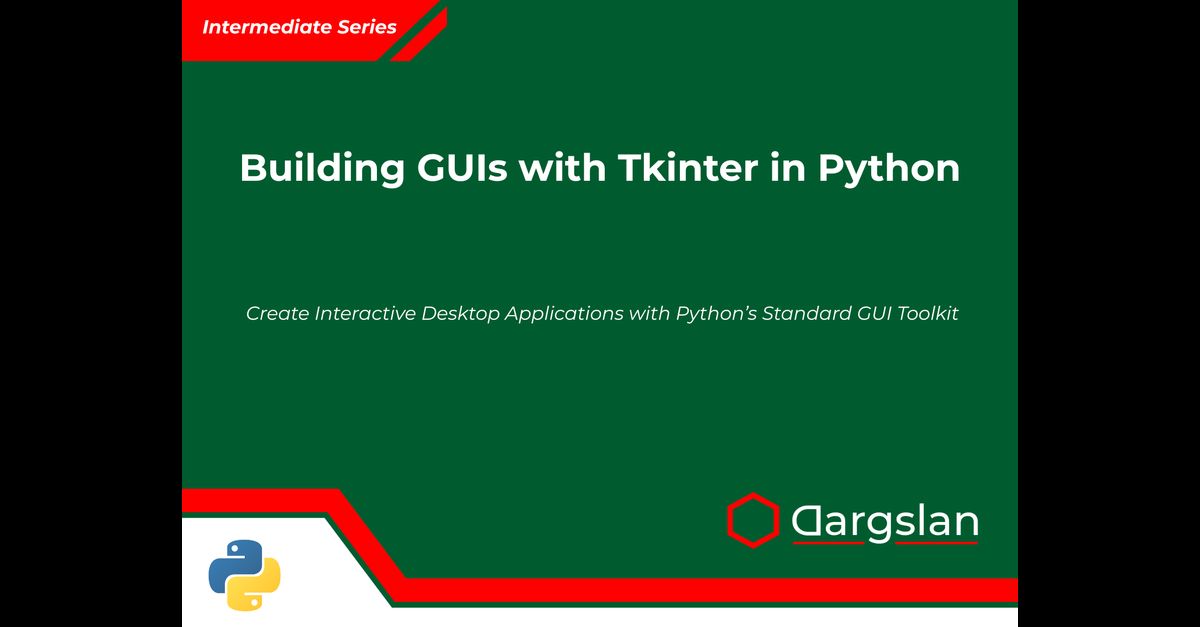
Building GUIs with Tkinter in Python



